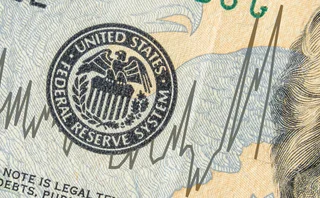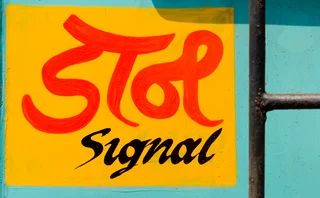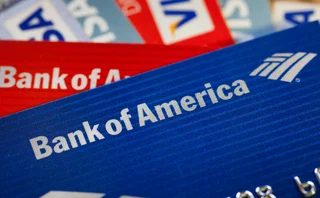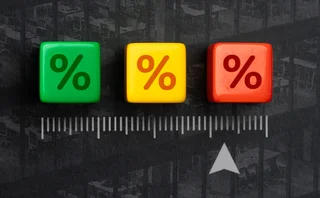
New CFTC block trade proposals spark row over 67% threshold
US block trading rules have been reproposed following intense criticism, but many dealers suspect the new methodology has been designed to produce the same end result. By Peter Madigan

There are lots of numbers in the US Commodity Futures Trading Commission’s (CFTC) March 15 proposals on block trades, but only one of them matters from the market’s point of view – the 67% threshold above which trades would be defined as blocks, qualifying for trading and reporting exemptions dealers argue are essential to preserve liquidity. The figure is already the subject of bitter complaints from the industry, which argues the number was picked to ensure a similar outcome to the CFTC’s ill-fated original proposals on the topic.
The threshold is defined in terms of the range of notional sizes seen in different asset classes and product types, so trades that fall into the top third of that range count as blocks – a US dollar interest rate swap with a tenor of less than three months would count as a block if it had a notional of at least $6.4 billion, for example. It’s not clear how many trades will qualify, but based on three months of data from the interest rate swap and credit default swap (CDS) markets, the CFTC estimates 6% of the transactions in each will be big enough to count as block trades.
Under the original proposals, no more than 5% of trades would have qualified, and critics suspect the agency’s new methodology is an attempt to replicate that result. Those suspicions would not have been dispelled by the February 23 meeting at which the new proposals were adopted, when CFTC commissioners Scott O’Malia and Jill Sommers claimed the 67% threshold had been hiked from the softer level of 50% just hours earlier (see box).
“I think this proposal is working to a preset answer, because the movement from a 5% block trade designation to a 6% designation is so small. Then there are an unusual number of invitations in the proposed rule to respond to questions on alternative methodologies. In one area, the commission asks for comment on moving the threshold from 67% to 50% of notional value, and that strikes me as almost random,” says Michael O’Brien, a partner specialising in derivatives at law firm Winston & Strawn in Chicago.
Many dealers and brokers share the same hypothesis – that after thunderous disapproval of the original methodology, which was not based on market statistics, the CFTC collected interest rate swap and CDS transaction data and then encouraged staff to reverse-engineer an approach that would end up exempting the same share of the market.
I think this proposal is working to a preset answer, because the movement from a 5% block trade designation to a 6% designation is so small
Risk put these complaints to CFTC chairman Gary Gensler during a press briefing at the annual get-together of the Futures Industry Association (FIA) in Boca Raton, Florida last month.
“No, that is not the case at all,” he said. “We put out the first rule and we got comments back saying the initial proposal was too complicated. Using the old methodology, we set the threshold at the higher number of either five times the mean, mode or median of notional trade size, or 95% of notional trade size. In fact, in many cases that methodology produced a figure of 98% or 99%. What we are doing now is far simpler.”
Feelings on the subject are running high because trades defined as blocks do not have to be executed on a swap execution facility (Sef) – one of the new breed of trading platforms introduced by the Dodd-Frank Act – and would also benefit from a public reporting delay. Both exemptions are necessary to ensure end-users are able to transact in large size and at reasonable cost, the industry argues. “The argument against setting the block threshold at 67% of notional value is that 94% of all trades would be captured on a Sef, and that would damage liquidity, because the smaller the scope of the block definition, the higher the risk of liquidity loss,” says a New York-based interdealer broker. “Congress directed the CFTC to take into account whether the public disclosure of a large trade will materially reduce market liquidity. Is there any analysis anywhere in the proposed rule of what the liquidity impact might be? I don’t see any attempt to gauge the impact on liquidity.”
Only users who have a paid subscription or are part of a corporate subscription are able to print or copy content.
To access these options, along with all other subscription benefits, please contact info@risk.net or view our subscription options here: http://subscriptions.risk.net/subscribe
You are currently unable to print this content. Please contact info@risk.net to find out more.
You are currently unable to copy this content. Please contact info@risk.net to find out more.
Copyright Infopro Digital Limited. All rights reserved.
As outlined in our terms and conditions, https://www.infopro-digital.com/terms-and-conditions/subscriptions/ (point 2.4), printing is limited to a single copy.
If you would like to purchase additional rights please email info@risk.net
Copyright Infopro Digital Limited. All rights reserved.
You may share this content using our article tools. As outlined in our terms and conditions, https://www.infopro-digital.com/terms-and-conditions/subscriptions/ (clause 2.4), an Authorised User may only make one copy of the materials for their own personal use. You must also comply with the restrictions in clause 2.5.
If you would like to purchase additional rights please email info@risk.net
More on Markets
Basis swaps surge amid US repo concerns
Fed funds-versus-SOFR swap volumes nearly quadruple as declining Fed reserves impact funding rates
India delays initial margin go-live date
RBI communicated putting off initial margin rules one day before planned November 8 implementation
Clearing bottlenecks blamed for muted volumes at FMX
Regulatory hurdles and market conditions have also hampered CME rival since its September launch
JPM sees upside in blurring lines between QIS and SMAs
Hedge funds are combining their strategies with bank indexes to create new products
Hedge funds take profit on vol trades with Trump win
FX volatility drops sharply as positions unwind; rates market sees mixed reaction
Shanghai Clearing House urged to take bond collateral for FX trades
Dealers complain that feeble interest rate paid on cash margin raises cost of clearing
BofA’s e-FX rebuild pulls it closer to rivals
Deploying its equities tech stack, bank seeks to get ahead of the pack with algo and e-FX offerings
Corporates look to tackle unhedgeable inflation indexes
As inflation risks mount for corporates, some are finding their exposures are linked to niche indexes







